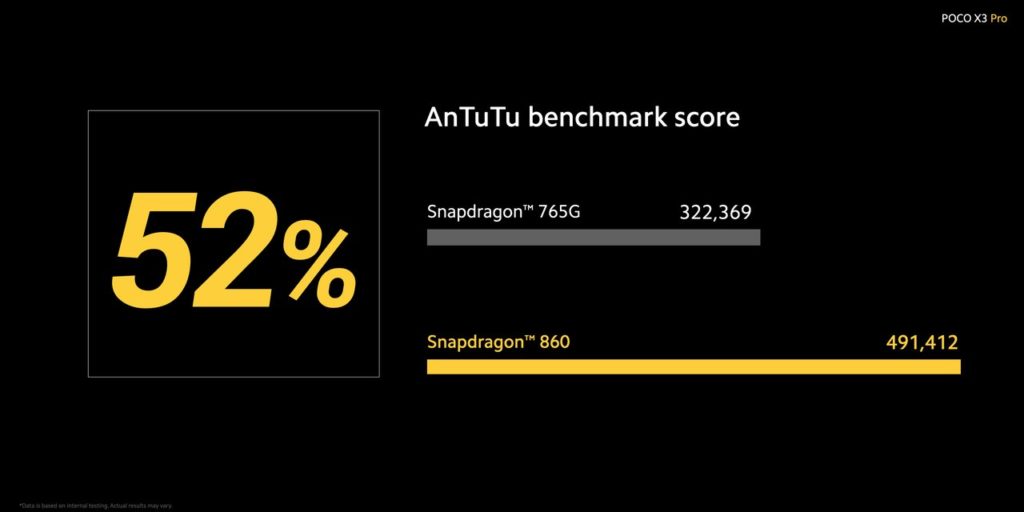So, POCO has finally unveiled the all-new POCO X3 Pro alongside the POCO F3 during a high profile launch event earlier today. Although the POCO X3 Pro bears the “Pro” branding in its moniker, but its really astonishing that the device is actually cheaper than the non-Pro POCO X3 NFC. No one is gonna complain about that for sure, but we certainly don’t see that coming.
While the POCO X3 Pro do share some identical specs and features as the POCO X3 NFC, but there are several notable differences that set them apart. Without further ado, let’s check out the similarities and differences between the new POCO X3 Pro and the POCO X3 NFC in our detailed specs comparision.

Design & Display
On the outside, both the POCO X3 Pro and POCO X3 NFC share an indistinguishable design. This include a central hole-punch display and a circular camera module at the back.
Their similarities extend to the majority of the display tech. Both devices sports a 6.67” FHD+ IPS LCD display which offers a smooth 120Hz refresh rate and a responsive 240Hz touch sampling rate. Both devices also share the DynamicSwitch feature for their refresh rate.

However, its worth noting that the front display of the POCO X3 Pro is protected by a newer generation’s Corning Gorilla Glass 6 instead of the Corning Gorilla Glass 5 used in the POCO X3 NFC. Also, the POCO X3 Pro is available in a new Metal Bronze colorway as well.
Performance
Speaking of performance, that’s where you find the key differences between the two devices. As we know, last year’s POCO X3 NFC is powered by a mid-ranger Snapdragon 732G chipset which is already pretty decent during that point of time when compared to other pricier mid-ranger phones with Snapdragon 720G or Snapdragon 730 chipsets.

This year, the POCO X3 Pro took things even further by bringing in a Snapdragon 860 chipset under the hood. In fact, its the first smartphone in the market to arrive with this flagship-level chipset which is said to boast 52% higher performance than Snapdragon 765G (based on AnTuTu’s benchmark test). As such, its indisputable that the POCO X3 Pro is currently the most powerful smartphone within its price segment.

Furthermore, the POCO X3 Pro also uses a more advanced UFS 3.1 flash storage specification over the UFS 2.1 flash storage specification adopted by the POCO X3 NFC. What this actually means is that the flash storage component of the POCO X3 Pro is able to support faster read and write speed, on top of other benefits like higher reliability and lower power consumption.
Therefore, the POCO X3 Pro certainly trump over the POCO X3 NFC in terms of performance (by a great extend).
Cameras
Coming to their camera department, there’s also some notable differences between the two even though both has a quad-camera system at the back. Firstly, the POCO X3 Pro features a slightly lower resolution 48 megapixels (f/1.79 aperture) Sony IMX582 sensor for its primary shooter. The POCO X3 NFC on the other hand, has a higher resolution 64 megapixels (f/1.9 aperture) primary shooter.

Similarly, the POCO X3 Pro is also equipped with a lower resolution 8 megapixels (f/2.2 aperture) ultra-wide camera instead of the 13 megapixels (f/2.2 aperture) ultra-wide camera found in the POCO X3 NFC. Both ultra-wide cameras however, offer a similar 119-degree FoV.
As for the other two cameras, they are the same 2 megapixels macro camera and depth sensor. Although both devices are equipped with different primary and ultra-wide cameras, but do note that this doesn’t necessarily translate to poorer image quality on the POCO X3 Pro. The overall photo quality is determined by numerous factors – not just the pixel count alone.
Battery & Charging
Interestingly, there isn’t any differences in terms of their battery capacity and charging speed. Both devices draw power from the same 5,160mAh battery which carries support for 33W fast-charging. However, there may ultimately be some slight differences in terms of battery life since both devices are equipped with different System-on-Chip.
Final Thoughts
The POCO X3 Pro is far more superior than the POCO X3 NFC in many aspects and brings along the much needed performance boost that most users cared most.
Although the device maybe equipped with slightly lower resolution cameras, but that doesn’t necessarily translates to lower quality images as we pointed out earlier. Most importantly, the POCO X3 Pro carries a slightly lower launch price than the POCO X3 NFC in most markets despite all the generous upgrades.
Therefore, the POCO X3 Pro is certainly a real deal in our opinion!